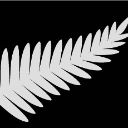- Home
- /
- Programming
- /
- Programming
- /
- Re: DEFININIG VARIABLES IN THE HEADER OF EVERY PAGE IN THE REPORT (TEM...
- RSS Feed
- Mark Topic as New
- Mark Topic as Read
- Float this Topic for Current User
- Bookmark
- Subscribe
- Mute
- Printer Friendly Page
- Mark as New
- Bookmark
- Subscribe
- Mute
- RSS Feed
- Permalink
- Report Inappropriate Content
Hi
How can I use variables that I have in the data in the title2?
Is it possible to define something like that?
ods rtf file="Z:\yy\xx\zz\Outputs\130621\%sysfunc(compress(&Subject)).rtf" newfile=none startpage=no
record_separator=none BODYTITLE Style=Custom;
ODS ESCAPECHAR='^' ;
title1 '^S={preimage="Z:\yy\xx\logo.jpg"}';
Is it possible to enter here variables from /*2**/?
proc report data = Analysis.b Style=Styles.Custom nowd split='^' nocenter ;
column Subject ;
define Subject /display style(column)={just=center cellwidth=1.4 in} "Subject Number" ;
where Subject="&Subject";
run;
/*2**/
proc sort data=analysis.gg ; by Subject PHONDAT; run;
proc report data =analysis.gg Style=Styles.Custom nowd split='^' nocenter style(report)={borderwidth=.5pt cellspacing=0pt cellpadding=0pt};
column PHONDAT_RAW PHVISYN SCCSYN LSTCNTYN1;
define PHONDAT_RAW /display style(column)={just=center cellwidth=0.5 in} "Contact Date";
define PHVISYN /display style(column)={just=center cellwidth=0.5 in} "Was telephone visit performed?";
define SCCSYN /display style(column)={just=center cellwidth=0.8 in} "Was Contact successful?";
define LSTCNTYN1 /display style(column)={just=center cellwidth=1 in} "Is this the last telephone contact? ";
where Subject="&Subject" ;
title ‘Follow-up';
run;
ods rtf close;
ods listing;
%mend;
- Mark as New
- Bookmark
- Subscribe
- Mute
- RSS Feed
- Permalink
- Report Inappropriate Content
What if you just make a macro variable and use that in your title statement?
- Mark as New
- Bookmark
- Subscribe
- Mute
- RSS Feed
- Permalink
- Report Inappropriate Content
Hi,
Could you please write how to do it?
Thanks
- Mark as New
- Bookmark
- Subscribe
- Mute
- RSS Feed
- Permalink
- Report Inappropriate Content
Please use the appropriate button to paste code.
Not too sure what you want to write, but this is one way:
data _null_;
set ANALYSIS.GG(obs=1);
call execute(catx(' ', 'title2 "', SUBJECT, '-', PHONDAT, ' "; ' );
run;Add this step after the title1.
- Mark as New
- Bookmark
- Subscribe
- Mute
- RSS Feed
- Permalink
- Report Inappropriate Content
hi,
I tried your solution. but, it shows dates like 'Phondat' as a number and also I want to see it as a table with columns and labels and not only display of variables.
- Mark as New
- Bookmark
- Subscribe
- Mute
- RSS Feed
- Permalink
- Report Inappropriate Content
Is it possible to locate this table in the header of every page in the report?
|
Treatment |
start date |
status |
End date |
|
|
28APR2020 |
|
17MAR2021 |
- Mark as New
- Bookmark
- Subscribe
- Mute
- RSS Feed
- Permalink
- Report Inappropriate Content
For an HTML output, you'd simply add the desired HTML tags in the title.
title1 'Report';
title2 '<table width="445px">
<thead>
<tr>
<td width="110.703px">
<p><strong>Treatment</strong></p>
</td>
<td width="110.82px">
<p><strong>start date</strong></p>
</td>
<td width="101.445px">
<p><strong>status</strong></p>
</td>
<td width="120.781px">
<p><strong>End date</strong></p>
</td>
</tr>
</thead>
<tbody>
<tr>
<td width="110.703px">
<p> </p>
</td>
<td width="110.82px">
<p>28APR2020</p>
</td>
<td width="101.445px">
<p> </p>
</td>
<td width="120.781px">
<p>17MAR2021</p>
</td>
</tr>
</tbody>
</table>';
ods html file='%temp%\test.html';
proc print data=SASHELP.CLASS(obs=2);
run;
ods html close;
I suppose RTF can do something similar, but I don't know RTF syntax.
- Mark as New
- Bookmark
- Subscribe
- Mute
- RSS Feed
- Permalink
- Report Inappropriate Content
This works for RTF too actually.
title2 '{\header\pard\plain\qc{
\trowd\trkeep\trhdr\trql
\clbrdrt\brdrs\brdrw15\brdrcf1\clbrdrb\brdrs\brdrw5\brdrcf1\clbrdrl\brdrs\brdrw15\brdrcf1\cltxlrtb\clvertalb\clcbpat17\clpadt60\clpadft3\clpadr60\clpadfr3\cellx1158
\clbrdrt\brdrs\brdrw15\brdrcf1\clbrdrb\brdrs\brdrw5\brdrcf1\clbrdrl\brdrs\brdrw5\brdrcf1\cltxlrtb\clvertalb\clcbpat17\clpadt60\clpadft3\clpadr60\clpadfr3\cellx2291
\clbrdrt\brdrs\brdrw15\brdrcf1\clbrdrb\brdrs\brdrw5\brdrcf1\clbrdrl\brdrs\brdrw5\brdrcf1\cltxlrtb\clvertalb\clcbpat17\clpadt60\clpadft3\clpadr60\clpadfr3\cellx2977
\clbrdrt\brdrs\brdrw15\brdrcf1\clbrdrb\brdrs\brdrw5\brdrcf1\clbrdrl\brdrs\brdrw5\brdrcf1\clbrdrr\brdrs\brdrw15\brdrcf1\cltxlrtb\clvertalb\clcbpat17\clpadt60\clpadft3\clpadr60\clpadfr3\cellx4178
\pard\plain\intbl\keepn\b\sb60\sa60\ql\f1\fs22\cf1{Treatment\cell}
\pard\plain\intbl\keepn\b\sb60\sa60\ql\f1\fs22\cf1{start_date\cell}
\pard\plain\intbl\keepn\b\sb60\sa60\ql\f1\fs22\cf1{status\cell}
\pard\plain\intbl\keepn\b\sb60\sa60\ql\f1\fs22\cf1{End_date\cell}
{\row}
\trowd\trkeep\trql
\clbrdrb\brdrs\brdrw15\brdrcf1\clbrdrl\brdrs\brdrw5\brdrcf1\cltxlrtb\clvertalt\clcbpat8\clpadt60\clpadft3\clpadr60\clpadfr3\cellx1158
\clbrdrb\brdrs\brdrw15\brdrcf1\clbrdrl\brdrs\brdrw5\brdrcf1\cltxlrtb\clvertalt\clcbpat8\clpadt60\clpadft3\clpadr60\clpadfr3\cellx2291
\clbrdrb\brdrs\brdrw15\brdrcf1\clbrdrl\brdrs\brdrw5\brdrcf1\cltxlrtb\clvertalt\clcbpat8\clpadt60\clpadft3\clpadr60\clpadfr3\cellx2977
\clbrdrb\brdrs\brdrw15\brdrcf1\clbrdrl\brdrs\brdrw5\brdrcf1\clbrdrr\brdrs\brdrw15\brdrcf1\cltxlrtb\clvertalt\clcbpat8\clpadt60\clpadft3\clpadr60\clpadfr3\cellx4178
\pard\plain\intbl\sb60\sa60\ql\f1\fs20\cf1{\cell}
\pard\plain\intbl\sb60\sa60\ql\f1\fs20\cf1{08APR2020\cell}
\pard\plain\intbl\sb60\sa60\ql\f1\fs20\cf1{\cell}
\pard\plain\intbl\sb60\sa60\ql\f1\fs20\cf1{07MAR2021\cell}
{\row}
}
}';
ods rtf file='%temp%\test.rtf';
proc print data=SASHELP.CLASS(obs=2) noobs; run;
ods rtf close;
April 27 – 30 | Gaylord Texan | Grapevine, Texas
Registration is open
Walk in ready to learn. Walk out ready to deliver. This is the data and AI conference you can't afford to miss.
Register now and lock in 2025 pricing—just $495!
Learn how use the CAT functions in SAS to join values from multiple variables into a single value.
Find more tutorials on the SAS Users YouTube channel.
SAS Training: Just a Click Away
Ready to level-up your skills? Choose your own adventure.





